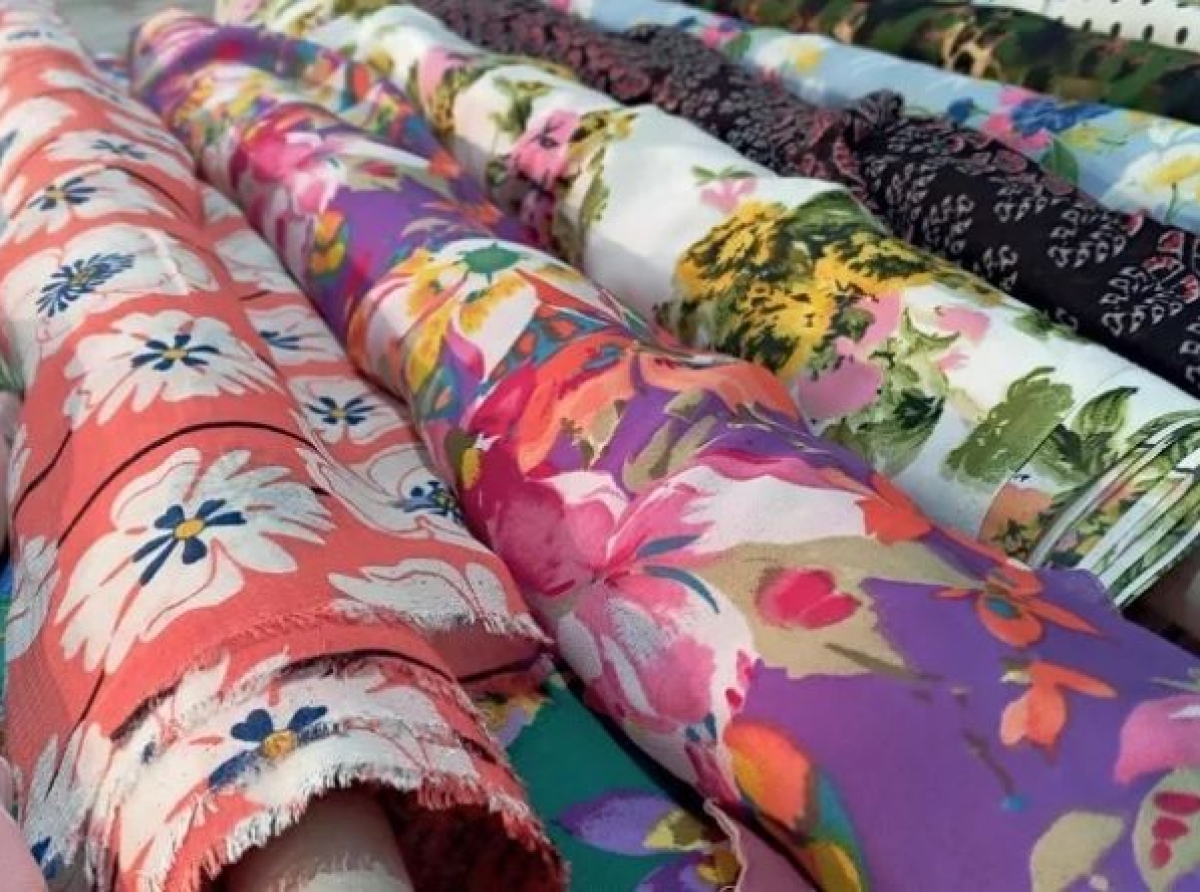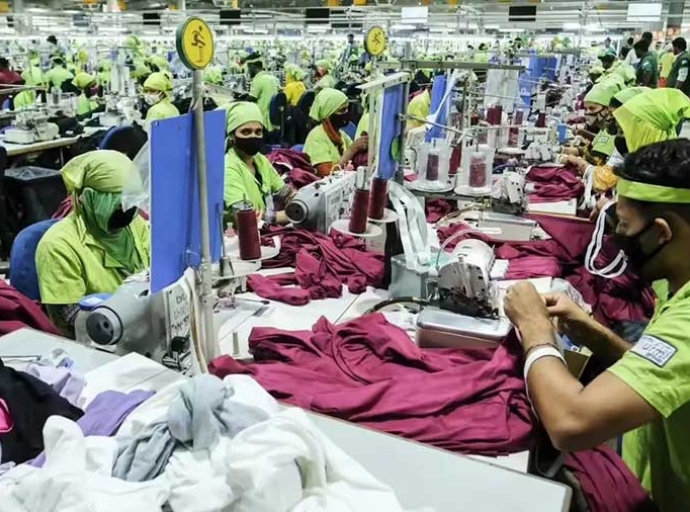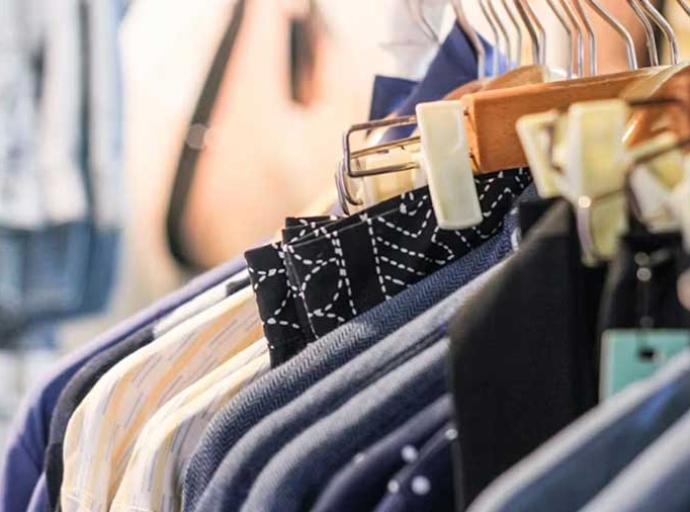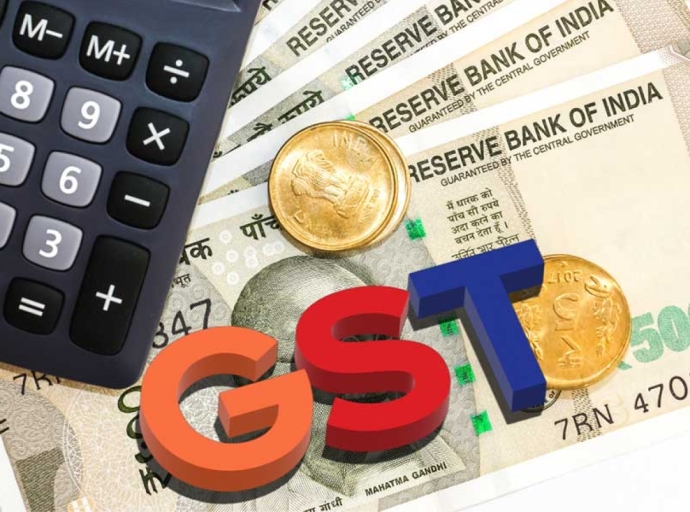26 May 2023, Mumbai
During the visit of Bangladesh's Minister of Textiles and Jute, Abdul Latif Siddique, the governments of India and Bangladesh inked an agreement on cooperation in the textile industry.
By creating an institutional basis for collaboration through a Joint Working Group (JWG), the MoU on textiles sector collaboration would serve as a significant trade facilitation instrument, according to textiles minister K.S. Rao.
Historical view
The JWG would foster partnerships between textile-related organizations in the two nations, including skill-development centers, fashion institutes, and research centers. "India and Bangladesh have a long history of cordial ties.
A number of bilateral meetings and trips between India and Bangladesh have strengthened their relationship in recent years. I want to reaffirm my unwavering dedication to amicable relations and robust bilateral ties in the textiles industry," said Rao.
Time old bond
The final draughts of the Cotton Purchase Agreement have been shared between the parties. The textile minister gave the Bangladesh Textile Mills assurance that obtaining cotton from India will not be a problem during the 2013–14 cotton season.
The creation of a successor organization for the International Jute Study Group, whose mandate expires in March 2014, was the other topic we covered. India has in principle agreed to support Bangladesh's proposal for a successor international organization to carry out the International Jute Study Group's activities.
Over 90% of the world's jute and related fiber production is produced in India and Bangladesh.
Increasing trade links in Bangladesh
According to those with knowledge of the situation, India has suggested a number of measures to Bangladesh to increase connectivity and trade between the two countries, including increased trans-shipment of commodities through Indian ports and the import of tea from India's northeastern states.
In an effort to strengthen bilateral relations, Bangladeshi Prime Minister Sheikh Hasina paid a four-day visit to India earlier this month. In an effort to strengthen bilateral relations, Bangladeshi Prime Minister Sheikh Hasina paid a four-day visit to India earlier this month.
During Bangladeshi Prime Minister Sheikh Hasina's visit to India from September 5 to 8, the measures were explained to the Bangladeshi side. In recent years, trade and connectivity, particularly efforts to strengthen rail, canal, and energy linkages based on India's northeastern regions, have emerged as a crucial pillar of bilateral relations.
Mutualistic
According to the individuals stated above, using Indian ports for the trans-shipment of commodities such as raw materials for Bangladesh's ready-made garments (RMG) industry, a significant portion of the neighboring country's exports, will result in a win-win situation for the two sides.
Currently, Bangladesh imports a lot of raw materials for its RMG industry, and these supplies must get to companies quickly so that they can fill orders from European and American customers.
Containers containing raw materials headed for Chattogram port are typically left at ports in Singapore, Colombo, or Tanjung Pelepas in Malaysia by ships of international shipping lines, from where feeder ships transport the containers to Bangladesh.
The continuously evolving fashion industry and its impact
Natural allies; Due to rapidly changing fashion industry trends, the RMG sector is time-sensitive, and any trans-shipment delays could limit Bangladeshi exporters' capacity to send more products to international markets, according to the sources.
According to the sources, a deal with Indian ports could make it easier to import and dispatch cargoes to Chattogram port more quickly. Such a plan would also shorten the shipping time to Chattogram port, which is currently three to four days for ports in Singapore and Colombo and barely two days for ports on India's east coast.
Constant pain points; There is a serious traffic jam at Colombo port right now, and trans-shipment containers could be there for up to 25 days. According to the persons, the delay at the Singaporean port is around 15 days, and an agreement with Indian ports will assist Bangladeshi importers in avoiding trans-shipment delays.
Surging Bangladesh Garment Exports to India: A Double-Edged Impact
High Demand for Bangladeshi Clothing Bangladesh's garment exports to India has experienced a remarkable surge, increasing by over 61% to $753 million in the first eight months of the fiscal year.
This growth can be attributed to the high-quality and affordable clothing produced in Bangladesh, which has found substantial demand in the Indian market.
Concerns for the Indian Government
While the increase in imports from Bangladesh presents economic opportunities, it also raises concerns for the Indian government. The surge poses a risk to the domestic garment manufacturing industry, which is one of the largest employers in India.
The rise in imports has led to job losses and decreased revenues, challenging the industry's stability.
Efforts to Address the Situation
Recognizing the need to protect the domestic industry, the Indian government has taken steps to address the situation. It has called for the enhancement of competitiveness and improvement in quality to better compete with Bangladeshi imports.
Incentives are being provided to textile manufacturers, and regulations are being streamlined to reduce the cost of doing business.
Future Trade Prospects and Challenges
Despite the efforts to mitigate the impact, it is expected that imports from Bangladesh will continue to grow in the future as both countries strengthen their trade ties. This poses a significant challenge for the Indian garment industry, which must adapt to the changing landscape.
Thriving Amidst Competition
To remain competitive, the Indian garment industry needs to implement appropriate policies and strategies. Focusing on enhancing competitiveness, improving quality, and fostering innovation will be crucial.
By embracing these measures, the industry can navigate the challenges posed by increased imports and thrive in the face of competition from Bangladesh.
Collaborative approach
The Indian side also put out a number of suggestions that were entirely centered on the northeastern states, such as Bangladesh importing tea from Assam and increasing cooperation in the textile industry.
Bangladesh mostly imports tea from Kenya, Singapore, China, and the United Arab Emirates in addition to India. They argued that purchasing tea from Assam will result in cost savings in areas like transportation. Although the textile industry in Bangladesh is well-developed, the northeastern states are experts in fields like design.
The National Institute of Fashion Technology (NIFT) is located in Shillong, and similar establishments can promote cooperation in this field, according to the aforementioned source.
An Electric Atmosphere of Brilliant Minds
An interactive session between the Bangladesh Garment Manufacturers and Exporters Association (BGMEA) and Indian delegates took place on 9th February 2023 in Delhi.
The event witnessed a broad-based representation of BGMEA, with notable figures from both countries' garment industries, including Faruque Hassan, President of BGMEA, Rajib Islam from Allue sourcing, Shovan Islam from Sparrow group, Gaurang Bhagat, President of Maskati Cloth Market Association, and Prashant Mohota, MD of GIMATEX, among others.
The session served as a platform for groundbreaking deliberations, trade insights, and a vision for strengthening the cross-border relationship between these natural allies.
Resilience and Progress of Bangladesh's Textile Industry
BGMEA strongly emphasizes the resilience of the textile industry, which has propelled it to new heights in the global textile economy.
The sector plays a pivotal role in generating precious export dollars, contributing to the nation's economy, employment, and wage earners.
This success is the result of enduring efforts by the government, valuable international development partners, a productive labor force, and a spirit of entrepreneurship.
The Secret Sauce: Green Initiatives and Graduating LDC Status
Bangladesh has made significant strides in green initiatives, with approximately 157 green garment factories, including LEED-certified buildings. The industry is actively working towards certifying more factories, aiming for sustainability, energy efficiency, and workplace safety.
Additionally, Bangladesh is set to graduate from its Least Developed Country (LDC) status by 2026 but will continue to enjoy privileges during a transition period.
Collaboration between India and Bangladesh: A Perfect Match The collaboration between India and Bangladesh in the garment industry is mutually beneficial. India heavily invests in the upstream industries of cotton spinning and weaving, while Bangladesh excels in skill-intensive garment manufacturing.
This partnership creates a harmonious relationship, complementing each other's strengths rather than competing.
India's role as a cotton supplier is crucial for Bangladesh's apparel exports, while Bangladesh presents an opportunity for India to diversify its sourcing destinations.
A Promising Future
Both countries recognize the potential for further collaboration. Bangladesh aims to reduce its reliance on China by exploring alternative sourcing destinations, with India being a favorable option due to its proximity.
Indian textile professionals contribute significantly to Bangladesh's growth, and India's expertise in areas like synthetic fibers and textile machinery presents opportunities for collaboration.
With calculated growth projections, BGMEA envisions Bangladesh's apparel exports reaching $100 billion by 2030, with India playing a vital role as a sourcing partner.
A Win-Win Partnership
Indian suppliers are encouraged to compete by offering competitive prices that rival those of China. Bangladesh, as an importing market, is willing to onboard India as a sourcing partner.
The facilitation of trade between the two countries has improved, and India's proximity makes it an advantageous choice. BGMEA estimates that India's textile exports to Bangladesh could reach $15 to $20 billion within Bangladesh's growth story, benefiting both nations' apparel sectors.
Strengthening Trade Bonds between India and Bangladesh Overall, the interactive session highlighted the strong trade ties and immense potential for collaboration between India and Bangladesh in the garment industry.
By leveraging each other's strengths and fostering a mutually beneficial partnership, both countries can create a win-win scenario and contribute to the growth and prosperity of the textile sector in the region.
Latest Publications


































